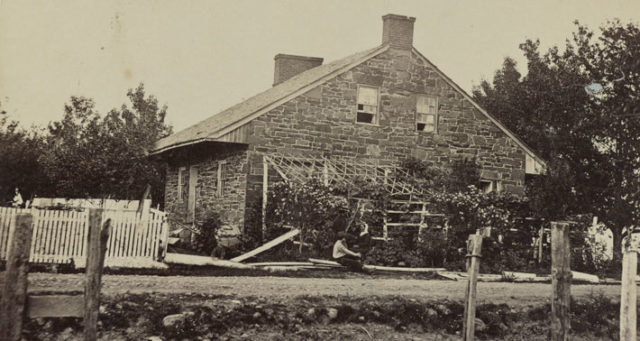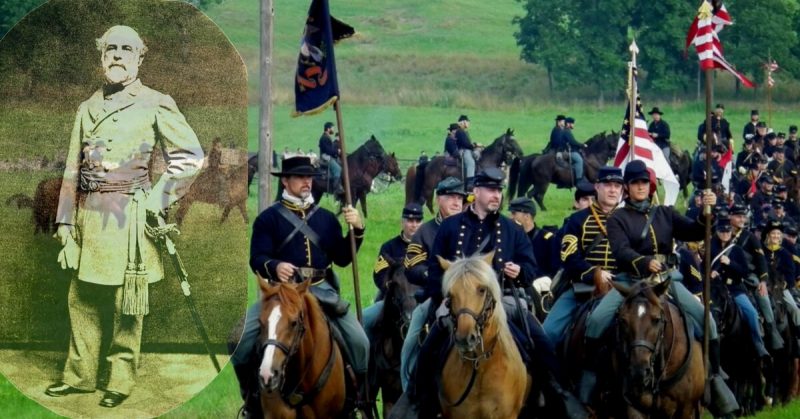The Civil War Trust this year bought the building which served as General Robert E. Lee’s headquarters during the civil war Battle of Gettysburg. Only on rare occasions does the Trust buy a historic building. Battlefields are of most interest to the organization that has rescued more than 42,000 acres of hallowed ground. Most of the land is donated to the National Park Service or a similar preservation group.
Lee’s Headquarters were different.
“That is just the way Robert Lee saw it,” said happy Trust president, Jim Lighthizer, as he toured the 1½ story 1832 house. At the time of Gettysburg, it was the home of Mary Thompson. Over the years, newer buildings have grown up around it, but the Civil War Trust has removed them, and now the only building standing on Seminary Ridge adjacent to Chambersburg Pike is the Thompson House.
“It was undeniably the least protected, historically vital building from the Civil War,” Lighthizer said. “This project was huge. This is where enormously important events occurred.”
Thompson was about 70 and a widow when the battle happened. She took refuge in the house throughout the heavy fighting that boiled around it on July 1, 1863. Within a short time, windows were broken, a fence demolished and the grounds trodden but the solid stone walls continued to hold. As the Confederates forced the Union forces from Thompson’s land in the late afternoon, Lee arrived at his new headquarters and stayed for the next three days.

Although the house initially drew the attention of the Trust, the grounds are equally as important not only for the severe fighting that took place and the hospital established there but also the exceptional viewpoint the ridge offered Lee to observe Union movements in the town. It still offers a stirring view of Gettysburg.
The modern hotel that the Trust quickly tore down had protected the Lee Headquarters for most of the 20th century and early 21st century. Starting in the 1920s, the house was transformed into a Civil War museum and a tourist court opened close by. That changed into the extensive hotel complex that employed General Lee’s Headquarters as part of its name. The house’s first floor continued in use as a museum. The upstairs was offered as a luxury suite due to the association of Lee’s presence in the building.
Few tourists knew of the building’s history as Lee’s headquarters’ even though it wasn’t a secret. Always owned privately, the building seems not to have appeared as a part of organized battlefield tours. Lighthizer estimated that close to 100 percent of the visitors to Gettysburg weren’t aware the building existed. That should change. The Thomson dwelling and land will be given to the government when the Park Service is able to enlarge its boundaries, The Washington Post reported.
Visitors to the Thompson House will view a roughly 1,200-square-foot, duplex with an attractive stone exterior. At present, although the house lacks furniture — and there probably will not be in the foreseeable future — or anything else to mirror Thompson’s way of life outside the house. Plans call for the Trust to build a replica picket fence, dog house and flower arbor that are evident in photographs made of the house by Mathew Brady a few days after the conflict. An apple orchard will be established at the building’s rear to be like the one Thompson had.
Lighthizer, famous for his ability to raise millions of dollars to rescue targeted Civil War battlefields, said he was amazed how fast the donations appeared for Lee’s Headquarters when he launched an appeal to the organization’s 55,000 members. On this occasion, he was soliciting money for the most costly per-acre purchase — about $1.5 million per acre — the Trust had ever attempted.
“It took under a year,” he said. “We are talking about the most well-known man in Civil War history and the country’s best-known battlefield. Everyone is familiar with those two names. Everyone wanted to assist.”
